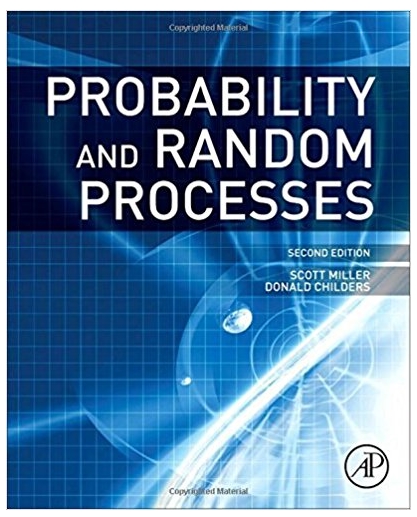Answered step by step
Verified Expert Solution
Question
1 Approved Answer
Score: <1 point> Week 2 1 Testing means - T-tests In questions 2 and 3, be sure to include the null and alternate hypotheses you
Score: <1 point> Week 2 1 Testing means - T-tests In questions 2 and 3, be sure to include the null and alternate hypotheses you will be testing. In the first 3 questions use alpha = 0.05 in making your decisions on rejecting or not rejecting the null hypothesis. Below are 2 one-sample t-tests comparing male and female average salaries to the overall sample mean. (Note: a one-sample t-test in Excel can be performed by selecting the 2-sample unequal variance t-test and making the second variable = Ho value -- see column S) Based on our sample, how do you interpret the results and what do these results suggest about the population means for male and female average salaries? Males Females Ho: Mean salary = 45 Ho: Mean salary = 45 Ha: Mean salary =/= 45 Ha: Mean salary =/= 45 Note: While the results both below are actually from Excel's t-Test: Two-Sample Assuming Unequal Variances, having no variance in the Ho variable makes the calculations default to the one-sample t-test outcome - we are tricking Excel into doing a one sample test for us. Male Mean 52 Variance 316 Observations 25 Hypothesized Mean Di 0 df 24 t Stat 1.968903827 P(T<=t) one-tail 0.03030785 t Critical one-tail 1.71088208 P(T<=t) two-tail 0.060615701 t Critical two-tail 2.063898562 Ho 45 0 25 Conclusion: Do not reject Ho; mean equals 45 Is this a 1 or 2 tail test? - why? P-value is: Is P-value > 0.05? Why do we not reject Ho? Interpretation: <1 point> 2 Female Mean 38 Variance 334.6667 Observations 25 Hypothesized Mean D 0 df 24 t Stat -1.91321 P(T<=t) one-tail 0.033862 t Critical one-tail 1.710882 P(T<=t) two-tail 0.067724 t Critical two-tail 2.063899 Ho 45 0 25 Conclusion: Do not reject Ho; mean equals 45 Is this a 1 or 2 tail test? - why? P-value is: Is P-value > 0.05? Why do we not reject Ho? Based on our sample data set, perform a 2-sample t-test to see if the population male and female average salaries could be equal to each other. (Since we have not yet covered testing for variance equality, assume the data sets have statistically equal variances.) Ho: Ha: Test to use: Place B43 in Outcome range box. P-value is: Is P-value < 0.05? Reject or do not reject Ho: If the null hypothesis was rejected, what of effect size measure: Meaning is the effect size value: Interpretation: b. Since the one and two sample t-test results provided different outcomes, which is the proper/correct apporach to comparing salary equality? Why? <1 point> 3 Based on our sample data set, can the male and female compas in the population be equal to each other? (Another 2-sample t-test.) Ho: Q3 Ho Female Male Female 45 45 45 45 45 45 45 45 45 45 45 34 41 23 22 23 42 24 24 69 36 34 1.017 0.870 1.157 0.979 1.134 1.149 1.052 1.175 1.043 1.134 1.043 1.096 1.025 1.000 0.956 1.000 1.050 1.043 1.043 1.210 1.161 1.096 45 45 45 45 45 45 45 45 45 45 45 57 23 50 24 75 24 24 23 22 35 24 1.000 1.074 1.020 0.903 1.122 0.903 0.982 1.086 1.075 1.052 1.140 1.187 1.000 1.041 1.043 1.119 1.043 1.043 1.000 0.956 1.129 1.043 45 77 1.087 1.149 45 45 55 65 1.052 1.157 1.145 1.140 Ha: Statistical test to use: Place B75 in Outcome range box. What is the p-value: Is P-value < 0.05? Reject or do not reject Ho: If the null hypothesis was rejected, what of effect size measure: Meaning is the effect size value: Interpretation: <1 point> 4 Since performance is often a factor in pay levels, is the average Performance Rating the same for both genders? Ho: Ha: Test to use: Place B106 in Outcome range box. What is the p-value: Is P-value < 0.05? Do we REJ or Not reject the null? If the null hypothesis was rejected, what of effect size measure: Meaning is the effect size value: Interpretation: <2 points> 5 If the salary and compa mean tests in questions 2 and 3 provide different results about male and female salary equality, which would be more appropriate to use in answering the question about salary equity? Why? What are your conclusions about equal pay at this point
Step by Step Solution
There are 3 Steps involved in it
Step: 1

Get Instant Access to Expert-Tailored Solutions
See step-by-step solutions with expert insights and AI powered tools for academic success
Step: 2

Step: 3

Ace Your Homework with AI
Get the answers you need in no time with our AI-driven, step-by-step assistance
Get Started


